This article was medically reviewed by Joseph Krajekian, DMD. Dr. Krajekian is a board certified Oral and Maxillofacial Surgeon at the Cleveland Clinic in Ohio. He received his DMD from Tufts University School of Dental Medicine in 2002. After obtaining his DMD, Dr. Krajekian went on to obtain his MD from Drexel College of Medicine.
There are 14 references cited in this article, which can be found at the bottom of the page.
wikiHow marks an article as reader-approved once it receives enough positive feedback. In this case, several readers have written to tell us that this article was helpful to them, earning it our reader-approved status.
This article has been viewed 234,804 times.
Buck teeth, otherwise known as malocclusion or overbite, is a common condition when the upper and lower sets of teeth don’t fit perfectly together.[1] Malocclusion can cause physical discomfort as well as stress related to appearance and bullying. An orthodontist can provide treatments to correct malocclusion, and there are also things you can do to make it easier to deal with.
Steps
Consulting with Your Orthodontist
-
1See your orthodontist as soon as possible. The sooner teeth alignment problems such as malocclusion are detected and treated, the better. Since the bones of children and adolescents are still relatively soft, their teeth can be moved more easily, making youth the best time to correct problems and irregularities such as malocclusion.[2]
-
2Have your orthodontist examine your teeth. Your orthodontist will examine the position of your teeth, as well as the general health of your mouth, teeth, and jaw. Based on this examination, he or she will recommend a course of action.Advertisement
-
3Understand the potential problems of malocclusion. Malocclusion is caused by skeletal issues, dental issues, or a combination of both. An orthodontist can fix only dental issues and mild skeletal issues; for skeletal issues, you will need to see an orthognathic surgeon. When your orthodontist examines your teeth, make sure that he or she explains the condition, and answers any questions you may have. While some degree of malocclusion is fairly common, this does not mean that the condition cannot cause problems. These can include:
-
4Discuss a treatment plan with your orthodontist. Your orthodontist can recommend the best treatment for you, based on your specific case and the position of your teeth. Possible treatments for malocclusion may include:[9]
- Braces or aligners. These are applied by an orthodontist, and help to shift your teeth back into their proper positions. Generally, they are worn for a period ranging from a few months to a few years.
- Removal of teeth (if overcrowding is causing the malocclusion)
- Repairing irregular teeth by caps and other restorations
- In rare cases, surgery may be required to change the shape of the jaw.
Living with Malocclusion
-
1Practice good dental hygiene. If you are unable to correct your malocclusion or have to wait for treatment, you should still make sure to take good care of your teeth. Keeping your mouth clean will make treatment easier when you are able to seek it, and is good for your overall health.
- Brush, floss, and rinse your teeth regularly (twice a day), and follow any special instructions your dentist gives you.[10]
- If you wish, you can also whiten your teeth with whitening toothpaste or at-home kits, or professional services provided by a dentist.
- Remember to see your dentist regularly for cleanings and examinations
-
2Draw attention to other parts of your appearance. If you are worried about the appearance of your teeth, you can draw attention away from them in various ways. For instance:
- Colorful or eye-catching makeup
- Distinctive earrings, hair style, etc.
- Using muted shades of lipstick (rather than bright colors, which draw more attention to the mouth)
-
3Smile with confidence. If you have malocclusion, you might want to keep your lips closed or cover your mouth when you smile, this might actually draw more attention to your mouth. Try smiling confidently and normally.
-
4Accept your appearance. Everyone has flaws, and accepting them in yourself and others is part of living a fulfilled life. Flaws, including physical imperfections, are also part of our “humanness,” and what makes each person unique.[11] Be proud of what makes you unique, and don’t constantly worry about being the same as others.
- Remember that standards of attractiveness vary from person to person (“beauty is in the eye of the beholder”).[12] No one thing defines you are, either for yourself or others. Be proud of who you are, inside and out.
- Practice self-compassion. This means being as forgiving to yourself as you would be to others. If you are able to accept others for who they are, extend the same compassion to yourself.
- Be mindful of your emotions. If you feel yourself judging yourself because of your malocclusion, stop and mentally remind yourself that you’re proud of who you are as a whole person.[13]
Dealing with Stress Caused by Malocclusion
-
1Understand the facts behind malocclusion. Malocclusion is not something you can prevent.[14] Ordinarily, it is a hereditary condition, passed down through families.[15] This means that no one does anything “wrong” to get buck teeth, although prolonged thumb sucking, pacifier use, or bottle feeding (past age three) can sometimes make it worse.[16]
-
2Seek support if you are bullied. If you are being bullied or stressed because of your teeth (or any other reason), let your school counselor, parents, or another trusted authority know about it so that you can get help.[17] There are many resources about how to deal with and prevent bullying; schools should have anti-bullying policies.
-
3Remember that you are not alone. Studies show that the most prevalent cause of bullying is a person’s smile. If you are bullied because of your teeth, it is important to remember that there are others like you. You can find support among others, and work together to change attitudes.
- Remember that most people actually have some degree of malocclusion—it’s just more noticeable in some people than in others.[18]
-
4Be confident. Malocclusion can be a source of embarrassment and stress, but remember that everyone has flaws. With or without malocclusion, you can be successful and fulfilled.
- If you ever feel stressed because of your malocclusion, or don't know how to go about seeking treatment, talk to a counselor, parent, or someone else you trust for support and help.
References
- ↑ https://www.shermanbalhoff.com/blog/2020/5/28/overbite-or-buck-teeth-the-steps-to-the-smile-youve-always-wanted
- ↑ http://www.nlm.nih.gov/medlineplus/ency/article/001058.htm
- ↑ http://pennstatehershey.adam.com/content.aspx?productId=117&pid=1&gid=001058
- ↑ http://www.healthofchildren.com/M/Malocclusion.html
- ↑ http://www.dentalabstracts.com/article/S0011-8486%2815%2900225-3/abstract
- ↑ http://dx.doi.org/10.1038/sj.bdj.2011.1071
- ↑ http://dx.doi.org/10.1038/sj.bdj.2011.1071
- ↑ Bellot-Arcis, C., Montiel-Company, J. M., & Almerich-Silla, J. M. (2013). Psychosocial impact of malocclusion in Spanish adolescents. Korean Journal Of Orthodontics, 43(4), 193-200.
- ↑ http://www.nlm.nih.gov/medlineplus/ency/article/001058.htm
- ↑ http://www.mayoclinic.org/healthy-lifestyle/adult-health/in-depth/dental/art-20045536
- ↑ http://www.lifehack.org/articles/communication/nobody-wants-perfect-flaws-are-beautiful.html
- ↑ http://psycnet.apa.org/journals/xhp/32/2/199/
- ↑ http://www.mayoclinic.org/healthy-living/adult-health/in-depth/self-esteem/art-20045374
- ↑ http://go.galegroup.com/ps/i.do?id=GALE%7CCX1918500474&v=2.1&u=lom_umichanna&it=r&p=GVRL&sw=w&asid=e1b44bb459746cbaaf509321d7d60098
- ↑ http://www.nlm.nih.gov/medlineplus/ency/article/001058.htm
- ↑ http://go.galegroup.com/ps/i.do?id=GALE%7CCX1918500474&v=2.1&u=lom_umichanna&it=r&p=GVRL&sw=w&asid=e1b44bb459746cbaaf509321d7d60098
- ↑ https://www.cambridge.org/core/journals/journal-of-psychologists-and-counsellors-in-schools/article/abs/friendly-schools-bullying-prevention-research-implications-for-school-counsellors/B35878C3D01E84EF2F00B6561CA4E9BE
- ↑ http://go.galegroup.com/ps/i.do?id=GALE%7CCX1918500474&v=2.1&u=lom_umichanna&it=r&p=GVRL&sw=w&asid=e1b44bb459746cbaaf509321d7d60098
About This Article
If you feel uncomfortable with your buck teeth, talk to an orthodontist about your options for straightening them out. For example, depending on the condition of your teeth, your orthodontist may recommend braces or aligners, caps, or jaw surgery. Braces and aligners are usually used with smaller teeth issues, whereas surgery may be needed for more serious skeletal issues. In the meantime, you can make a few small changes to your appearance to make you feel confident and beautiful! Most importantly, brush your teeth twice a day, and floss once a day, since practicing good dental hygiene will keep you healthy and feeling good. While it may be tempting to smile with your lips closed, this will only draw more attention to your mouth, so smile with confidence! Remember, everyone has flaws, so try to accept yourself the best you can. To learn how to seek support if you’re being bullied, read more from our Dental co-author.

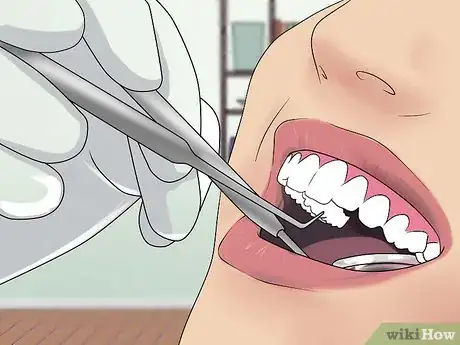

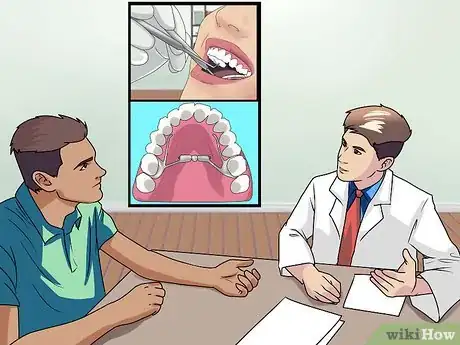




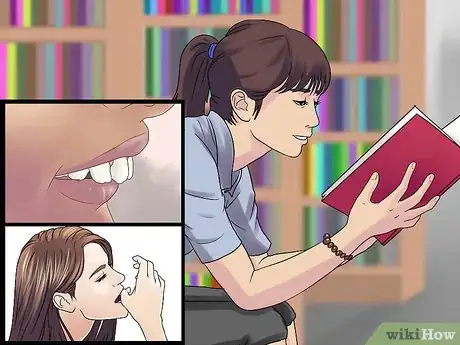



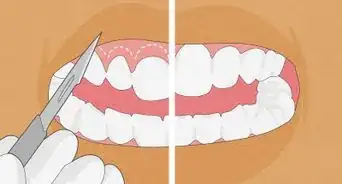
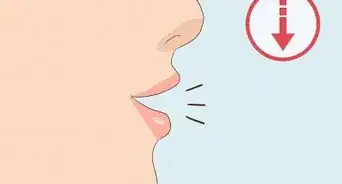
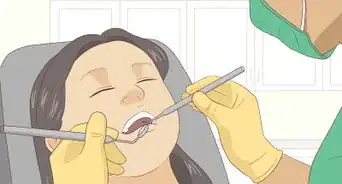

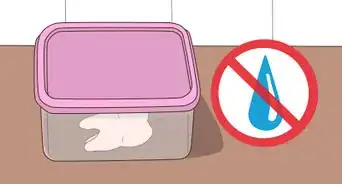
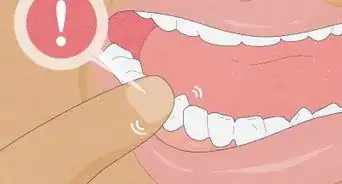


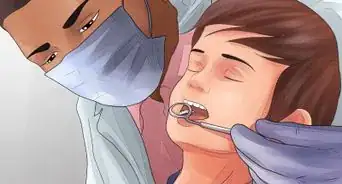















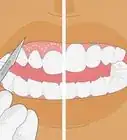
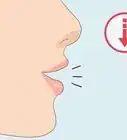
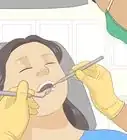




































Medical Disclaimer
The content of this article is not intended to be a substitute for professional medical advice, examination, diagnosis, or treatment. You should always contact your doctor or other qualified healthcare professional before starting, changing, or stopping any kind of health treatment.
Read More...